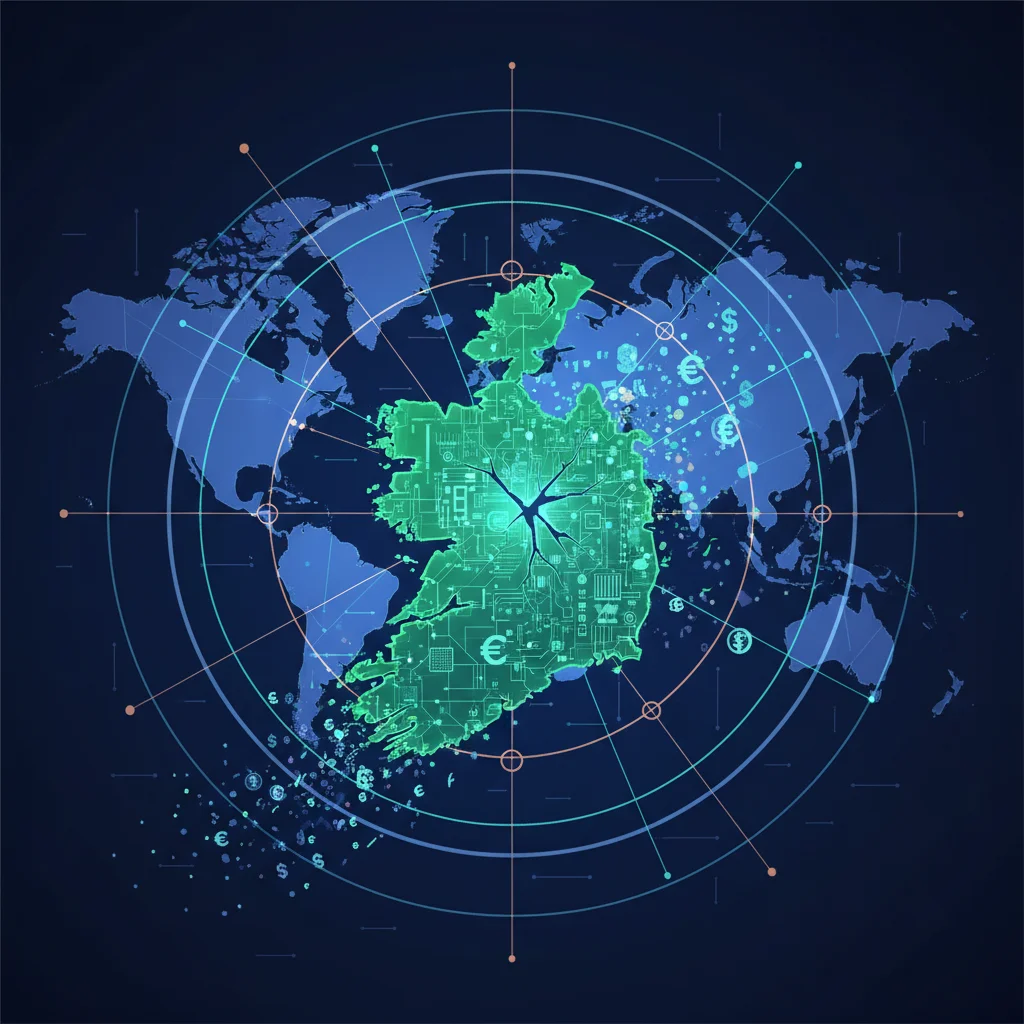
Ireland’s Trillion-Dollar Vulnerability: The Digital Achilles’ Heel of the Global Economy
In the intricate web of the global economy, information is the new currency. Every day, trillions of dollars in financial transactions, countless business communications, and the very data that powers our digital lives race across the ocean floor through a network of subsea fiber-optic cables. A significant portion of these vital arteries, connecting North America and Europe, makes landfall on the shores of a single, unlikely nation: Ireland.
Renowned for its vibrant culture, stunning landscapes, and a powerhouse economy built on attracting the world’s biggest technology and pharmaceutical companies, Ireland holds a unique position. It is a critical node in the world’s digital infrastructure. Yet, this technological strength masks a profound and growing vulnerability. Due to a long-standing policy of military neutrality, Ireland is, by its own admission, spectacularly ill-equipped to defend this critical infrastructure. This paradox has transformed the Celtic Tiger into what many now consider the weak spot in Europe’s collective security, creating a high-stakes economic risk that investors, finance professionals, and business leaders can no longer afford to ignore.
The Data Superhighway’s Unseen Guardian
To understand the magnitude of the risk, one must first appreciate the scale of Ireland’s role in the digital economy. It isn’t just home to the European headquarters of giants like Google, Meta, Apple, and a thriving fintech scene; it is the physical gateway for a colossal volume of data. These subsea cables are the bedrock of modern finance, enabling everything from international banking transfers to high-frequency stock market trading. A disruption to these cables wouldn’t just slow down your Netflix stream; it could paralyze financial markets and cripple international commerce in minutes.
The Irish government and military leaders are acutely aware of this exposure. As one former head of the Irish naval service noted, an attack on this infrastructure would be a “catastrophic event” for the world (source). The problem is a stark mismatch between the strategic importance of these assets and the capacity to protect them. Ireland’s defense forces are among the smallest and most poorly funded in Europe. The nation possesses no primary radar system to monitor its own airspace, effectively flying blind. It relies on a “secret” but well-known agreement with the UK’s Royal Air Force (RAF) to police its skies—a sovereign anomaly that underscores its defensive shortcomings.
Exceedingly Good Returns: How a 1960s Cake Brand Baked a Modern Financial Turnaround
The situation at sea is equally concerning. The Irish navy is too small to adequately patrol the vast maritime domain it is responsible for, an area that includes the location of these critical cables. This resource gap has not gone unnoticed by potential adversaries.
A Geopolitical Wake-Up Call in the North Atlantic
The theoretical risk became chillingly real following Russia’s full-scale invasion of Ukraine. Geopolitical tensions, once a distant concern for Dublin, arrived directly off its coast. Russian naval vessels, including spy ships, have been repeatedly detected operating in close proximity to Ireland’s subsea cables. While these ships remained in international waters, their presence was a clear and unambiguous message. As Aanu Adeoye of the Financial Times highlighted, these ships were “loitering with intent,” engaging in activities that raised serious alarms about potential sabotage across Western security circles.
This has forced a national reckoning in a country where military neutrality is a deeply ingrained part of its identity, dating back to its independence. The Irish public has long cherished this non-aligned status. Yet, the stark reality of modern hybrid warfare—where critical civilian infrastructure is a primary target—is challenging this long-held belief. The debate is no longer academic; it’s about the fundamental security of the state and its economic future.
To illustrate the disparity in defense posture, consider a comparison between Ireland and another small, technologically advanced European nation like Denmark.
| Metric | Ireland | Denmark |
|---|---|---|
| NATO Member | No | Yes (Founding Member) |
| Defense Spending (as % of GDP) | Approximately 0.3% | Aiming for 2.0% (NATO target) |
| Primary Radar Coverage | No | Yes |
| Combat Aircraft Fleet | No | Yes (F-16, transitioning to F-35) |
| Primary Naval Role | Fisheries Protection, SAR | Maritime Defense, NATO Operations |
This table starkly reveals the gap. While Denmark is fully integrated into the Western security alliance with modern capabilities, Ireland’s posture remains that of a bygone era, a reality its government is now being forced to confront. The Irish government recently held a consultative forum on international security, the first serious public discussion on the topic in decades, signaling a potential policy shift (source).
Lula's High-Wire Act: Balancing Brazil's Climate Goals with a Multi-Billion Dollar Oil Bet
Navigating the Path Forward: Investment, Alliances, and the Economy
The path forward for Ireland is complex. Full NATO membership, while the most direct solution, remains politically contentious and is not on the immediate agenda. The public remains divided, and the political capital required for such a historic shift is immense. However, the status quo is no longer tenable.
The more likely trajectory involves a significant increase in defense spending and deeper integration with European Union security and defense structures, such as the Permanent Structured Cooperation (PESCO). The immediate priorities are clear:
- Acquiring Primary Radar: To gain basic surveillance and control over its own airspace.
- Modernizing the Navy: To provide a credible patrol and deterrent capability in its maritime domain.
- Investing in Cybersecurity: To protect its digital infrastructure from non-physical threats.
For the financial and business world, this evolution carries significant implications. A more security-conscious Ireland, investing in its own defense, becomes a more resilient and reliable hub for investment. This shift could create new opportunities in the defense, technology, and cybersecurity sectors within Ireland. Conversely, a failure to adequately address these vulnerabilities could lead multinational corporations and fintech innovators to reassess the long-term risk of basing their critical European operations in the country. The stability of complex systems, from blockchain-based ledgers to international banking networks, relies on the physical security of the underlying hardware.
Conclusion: From Achilles’ Heel to Strategic Partner
Ireland stands at a crucial crossroads where its historical identity, modern economy, and geopolitical reality collide. The nation’s vulnerability is not just its own problem; it is a shared risk for Europe and the entire global financial system. The invisible data cables lying off its coast are the lifelines of 21st-century economics, and their protection is a matter of international concern.
The journey from being Europe’s “weak spot” to a proactive and capable security partner will require political courage, significant financial investment, and a fundamental shift in public mindset. For investors and business leaders, the key takeaway is that geopolitical risk is now an inescapable factor in even the most stable Western economies. Watching how Ireland navigates this challenge will be a critical indicator of its future as a secure and prosperous hub for global finance and technology.


